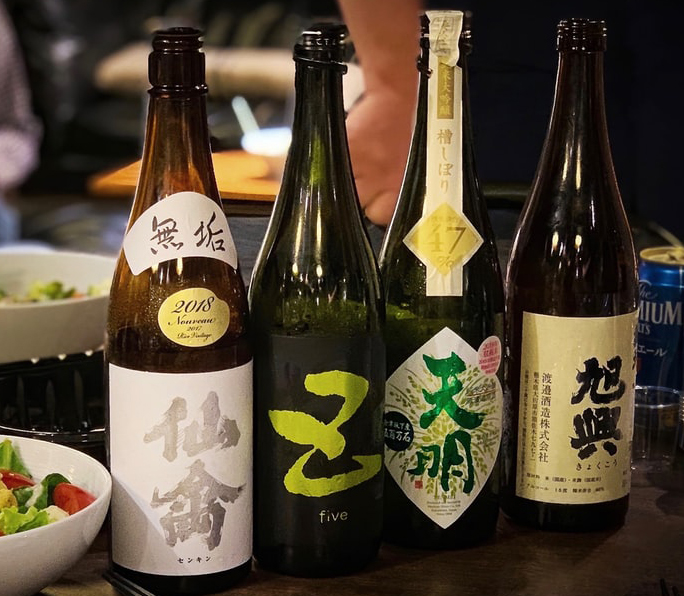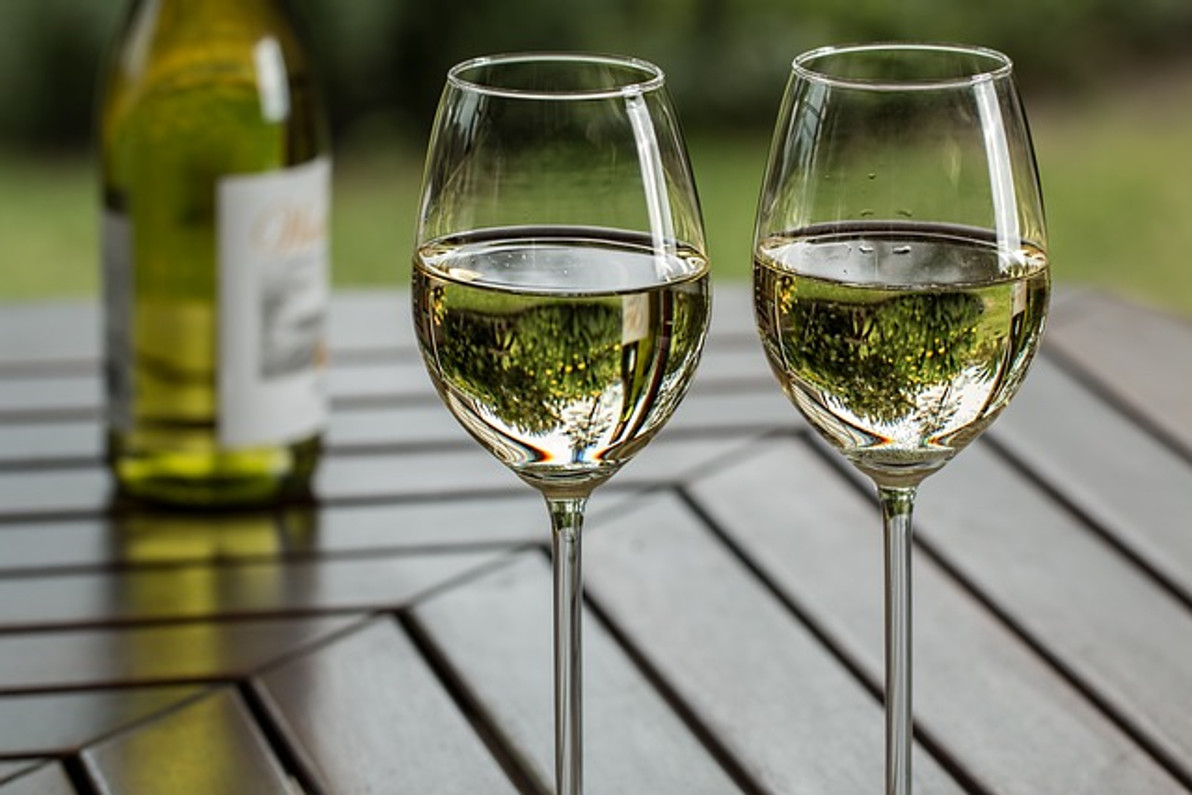The History of Sake
If there is one drink that people usually associate with Japan, it is Sake. What exactly is Sake and why do people think of Japan when this drink is mentioned? How did sake come about?
Sake is a fermented alcoholic drink that is made from rice. Called nihonshu in Japan, the drink is considered this Asian country’s national drink. This traditional beverage is similar to wine and beer and is said to be an essential part of the culture and lifestyle of the country.
Sake has always been part of the Japanese landscape and is often used in traditional celebrations that include national holidays, formal ceremonies, and special events such as weddings. People drink sake from a traditional porcelain cup called a sakazuki and is poured out of another traditional piece of porcelain, a long-necked, tall bottle called a tokkuri.
Origins of Sake
This classic Japanese drink has been around for as long as people can remember. The actual date as to when it was first invented is not clear though, with some people saying that it was first made in 500 BC while others say that this drink was first made in 300 BC, during the Yayoi Period.
Where it was first made has also been a source of debate for those who love the drink. Some say it was first made in China and was brought to Japan while others say that it was originally made in Japan. The reason for the confusion is because the creation of this drink predates recorded history. Because of this, most of the drink’s origins are shrouded in mystery.
If you were to talk about when sake was first produced using a formal brewing method, this is said to have happened somewhere between the Nara Period and Heian Period, which is the years between 710 and 1185. Sake was produced by Sake-no-Tsukasa, which was an organization that had the responsibility to create the drink for no other than the Imperial Court. Temples then started making their own sake after that, and later, breweries for the drink began popping up sometime between 1333 and 1573, a time known as the Muromachi Period.
From then on, the making of sake became more refined, with people developing techniques for making better versions of the beverage using polished rice and the pressing fermentation mash. They also came up with a pasteurization process or heat sterilization method that created a more stable version of the drink. This process helps stop fermentation and keeps the flavor of the Sake stable.
How Sake is Made
As mentioned earlier, sake is a drink that is made using fermented rice, but this is just the simplified take on the creation of sake. In reality, this drink is made using a long process that begins with brown rice. High-quality brown rice is selected for the creation of this drink. The rice used in the creation of sake is called shuzo kotekimai, which is type of grain that is cultivated particularly for sake making, much like specific grapes are cultivated for wine making.
The brown rice is then polished to get the white rice needed for the making of high-quality sake. To get 1 kilo of polished white rice for the making of sake, producers need to use 1.4 kilos of brown rice. The reason for the huge disparity in volume is due to the fact that in order for sake rice grains to get to the proper polished state these need to be in before being ready for fermentation, these have to be polished to a high degree.
For great sake, rice grains have to have around 30% of their outer layer removed via polishing. This is why there is a huge difference in the weight of the original brown rice used for this and the white rice that is fermented into sake. For more refined sake, even more of the grain is polished off, with only 50% of it left after the polishing process.
The next step in the sake making process is the soaking of the rice. Rice is washed thoroughly after it is polished to the desired level. Rice bran, which is the fine powder found outside the grains after the polishing step, is washed off thoroughly from the grains before these grains are soaked. For the grains to soak as much moisture as possible, these are usually left overnight, covered with cloth to prevent water from escaping.
After the rice is soaked, it is then steamed in preparation for the fermentation process. The steaming step is different from the regular cooking process used for making rice that people eat. While eaten rice is cooked in boiling water to soften it, the rice used for creating sake is steamed to keep them firm. This is needed to keep rice grains separate and to give the koji, or Aspergillus oryzae, the chance to properly penetrate each grain for proper sake making.
Koji is the fungus starter used to break down the grains and to aid in fermentation. Spores of the koji mold are introduced to the steamed rice grains and left to develop on a table called a toko. The rice is left to develop, covered in damp piece of cloth to keep moisture and temperatures constant. This step takes two days.
Once the koji has done its job, fermentation is the next step. During the fermentation process, care is taken to ensure that the water used has very little iron in it. It is in this step that yeast is introduced to the mix. Yeast is added to a batch of rice with koji and water. This is called the yeast starter. Once this has developed into the yeast starter, this is then added to a tank to create the moromi, or the fermentation mash.
The fermentation mash is made through a few steps that take a few days to finish. It begins with the addition of steamed rice, koji rice, water, and the fermentation starter to the bottom of the tank. This is just 1/6 of the total volume of moromi that goes into the tank. The second day, nothing is added, but on the third day, double the amount of what was added on the first day is put into the tank. On the fourth and final day, the rest of the batch is added to create the final moromi or fermentation mash mixture.
This mash is mixed every day and kept at 15 degrees Celcius for three weeks. This will create an alcohol concentration of about 18%. Once this is achieved, this is then pressed and filtered. The fresh sake then goes through what is called hiire, which is a pasteurization process that removes bacteria and stops the fermentation process. The fresh sake is then stored and aged before it is bottled and shipped off to consumers everywhere.

Different Kinds of Sake
Some people believe that sake is only one kind of drink, but they are wrong. Just like beer and wine, there a lot of different kinds of sake that you can choose from. Here are the five basic types:
Junmai Shu – this is called the purest of all the sake types because it does not have any brewer’s alcohol added into it. There are no additional starches or sugars in it. In short, this is basically pure rice sake, which is what the name translates to. The flavor of this sake is fuller than most other types and is also considered heavier. It is also more acidic than the other sake types.
Honjozo Shu – this type of sake has a little brewer’s alcohol added to it. This is to help make the sake lighter. The alcohol is added during the tail end of the fermentation process. This is also made using rice with 30% of the outside polished off. The flavor of this sake is smooth, light, and a bit drier. It is considered easier to drink and has a stronger sake fragrance.
Ginjo Shu – this is one of the more delicate and lighter types of sake around when it comes to flavor. This can be attributed to the fact that around 40% of the rice used in this mix is milled off. This is also one of the sakes that are fermented at a lower temperature and for an extended period of time. Some say that the flavor of this sake can be flowery and fruity while others simply say that it is delicate and somewhat complex in flavor.
Daiginjo Shu – this is similar to ginjo shu sake, but instead of a 40% mill, it uses rice that has been milled between 35% and 50%. It is brewed to create a highly fragrant sake with a delicate taste but full body. It is said that the brewing of this type of sake is more complex than that of the ginjo shu.
Namazake – this is the type of sake that does not undergo hiire or pasteurization. As such, this means you will need to refrigerate this particular type to prevent the changing of its flavors and to stop the development of bacteria. It is sometimes called raw sake due to the lack of the heating process at the end. The flavor of this sake is often described as fresh and light with a lively flavor. All of the other types of sake can be a Namazake if these are bottled without being pasteurized.
What Food Should You Eat With Sake?
If you love wine, you know that red wine goes well with meat and poultry, and white wine goes well with seafood. Just like the pairing of wine with food, you can also pair different kinds of sake with different types of food. To give you an overview of the kinds of pairings you can do with sake and food, here are some ideas:
Junmai – some of the food that goes well with this full bodied sake include steaks, fatty meats and fish, sushi, and ramen. Stir-fried vegetables are also great with this sake choice.
Honjozo – this robust yet dry sake is also great with ramen and fish cakes. It is also great with all types of simple cuisine, such as hiyayako (cold tofu dish), pickles, and seafood.
Ginjo and Daiginjo – this sake can be paired with raw fish like sashimi, ohitashi (bonito flavored boiled greens), chop suey, vegetable tempura, and seafood salads. These are also great paired with fruits.
Namazake – since this sake is usually sweet and fresh tasting, you should also partner this with food that have a similar flavor profile. Included in your choices are fresh shrimp, scallops, cheese, caviar, and fresh oysters. You can also pair this with pasta dishes and chicken.
Other types of sake that include aged and vintage ones are great with strong flavored food. Peking duck, dumplings, steak, lamb chops, and fois gras are just some of the food types that work great with vintage sake.
When pairing your sake with the food that you eat, always remember that harmony and balance is the key and not contrast. Never go for a pairing that clashes since it destroys the essence of the sake and muddles the pairing experience altogether.
Should You Drink Your Sake Hot or Cold?
This is a question that many people ask when they first try sake, and the answer is, it depends on what type of sake you are drinking. One type of sake that you always take cold is the Namazake since it needs to be kept chilled to prevent the development of bacteria and to keep the flavor of this raw sake stable. Another sake that can be served slightly chilled are the Ginjo and Junmai.
Junmai can also be served at room temperature, along with Ginjo and Daiginjo, but only if these are of the highest quality. All other sake can be served warm but you have to take care not to exceed the recommended temperature for these. Try to make sure that these don’t go above 45 degrees Celsius so you don’t destroy the flavor and composition of the sake.
These are just a few of the interesting fact that you should know about sake before you start enjoying this traditional Japanese drink. You can go on a quest of discovery with your food pairing, experimenting with warm and cold versions, and finding the many differences in the many variants there are for each type being sold in Japan.
We have a large selection of Sake here at NapaCabs. Check out our entire collection of Sake HERE.
Recent Posts
-
Essential Wine Guide: Top Tips for Selecting, Tasting, and Enjoying Your Bottle
Picking the right wine can be a sensory quest as rich as the flavors in your glass. Navigate the lan …Apr 18th 2024 -
The Ultimate Wine FAQ Sheet
Do you have some burning wine questions that need answering? We're here to help!Let's get straight t …Mar 19th 2024 -
A White Wine Food Pairing Guide To Make Every Meal Exceptional
A meal is only complete once you have the ultimate wine pairing to go with it. Red wine is excellent …Feb 6th 2024




